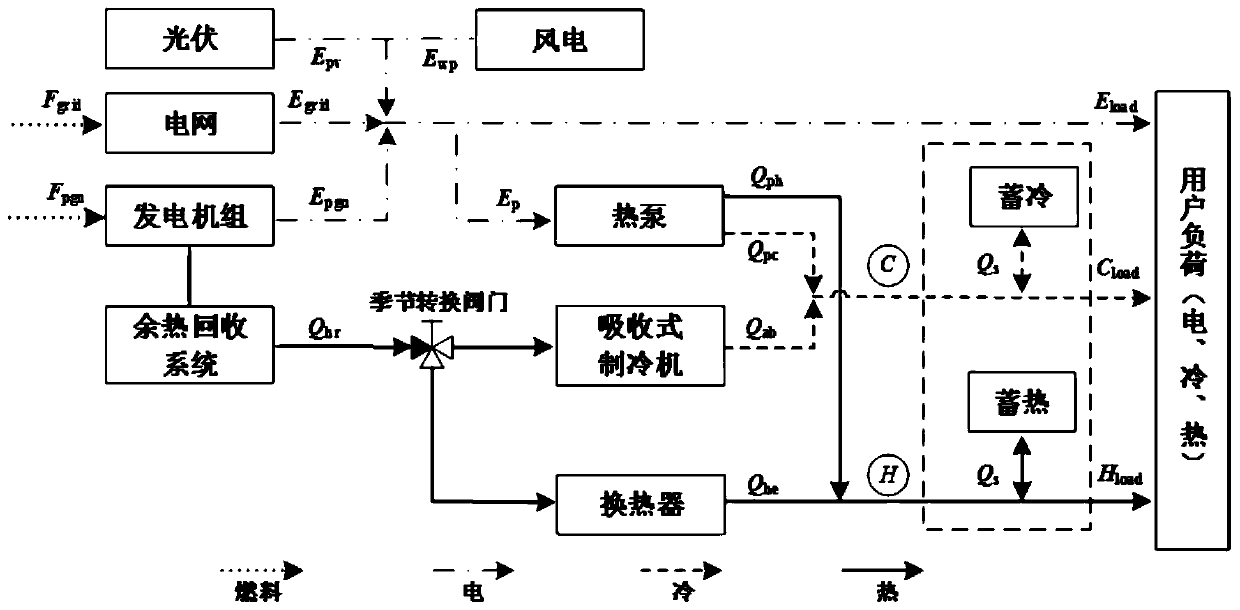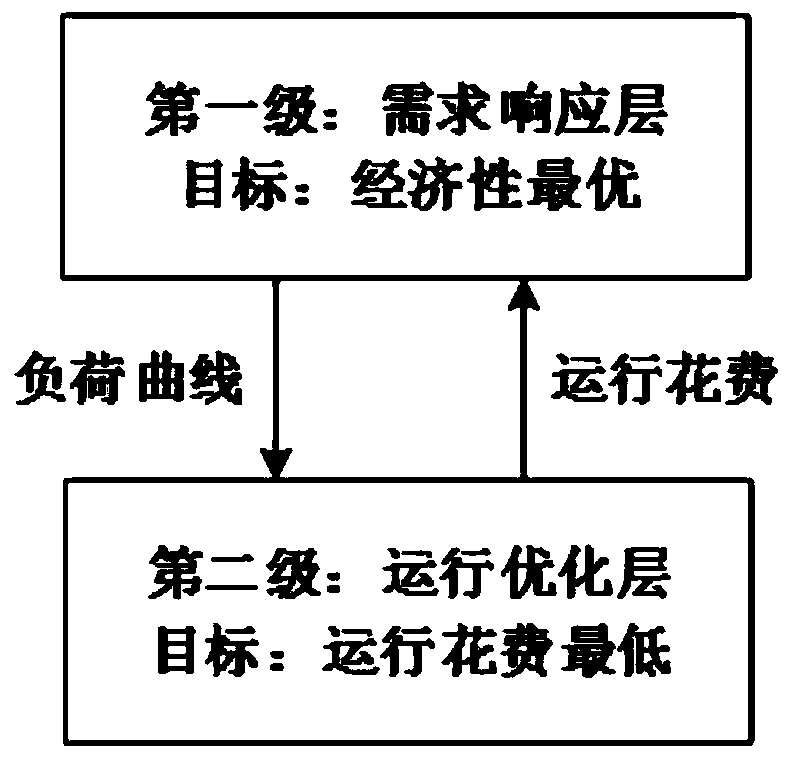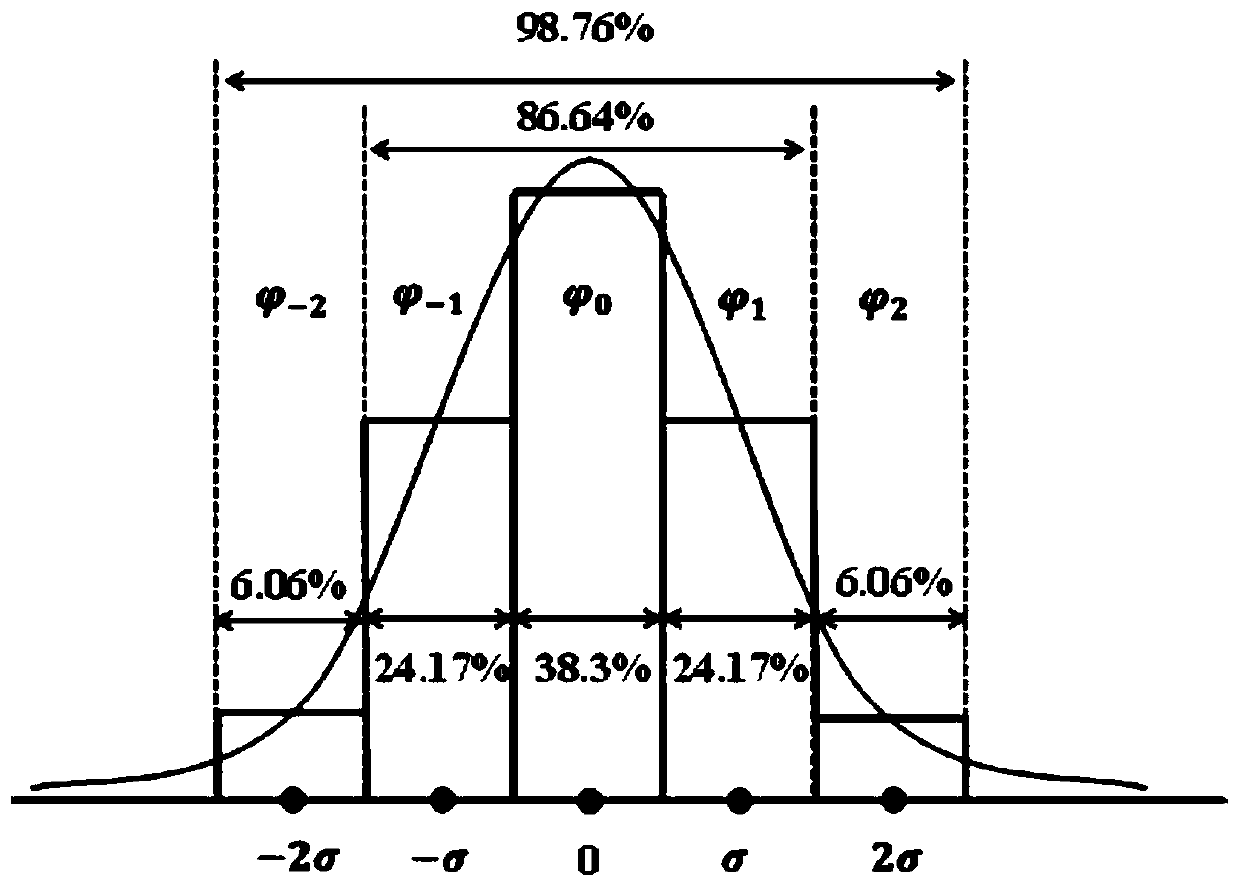Multi-energy complementary system two-stage optimization scheduling method and system considering source storage load cooperation
A technology for optimal scheduling and source-storage, applied in the fields of environmental protection and energy saving, can solve problems such as ignoring load schedulability and difficulty in system optimal scheduling, and achieve the best matching, improved economic efficiency, and optimal economic efficiency
- Summary
- Abstract
- Description
- Claims
- Application Information
AI Technical Summary
Problems solved by technology
Method used
Image
Examples
Embodiment 1
[0053] The structure of the multi-energy complementary CCHP system is as follows: figure 1 As shown, the system consists of fans, photovoltaic cells, internal combustion generators, absorption refrigerators, heat pumps, cold storage devices, heat storage devices, electrical loads, cooling loads and thermal loads. The electrical load is supplied by fans, photovoltaics, internal combustion generators, and the upper-level power grid; the cooling load is supplied by heat pumps, absorption refrigerators, and cold storage equipment; the heat load is supplied by heat pumps, generating unit waste heat systems, and thermal storage equipment; Demand response flexibly participates in scheduling.
[0054] based on figure 1 According to the above structure, Embodiment 1 of the present disclosure proposes a two-level optimal scheduling method for a multi-energy complementary system that takes into account the coordination of source, storage and load, such as figure 2 As shown, the first ...
Embodiment 2
[0143] Embodiment 2 of the present disclosure provides a two-level optimal scheduling system for a multi-energy complementary system that takes into account the coordination of source, storage and load, including:
[0144] The first-level optimization module is configured to: obtain load data, take economic optimization as the goal and user comfort as the constraint, use genetic algorithm to optimize the load, and use the optimized load as the input of the second-level optimization;
[0145] The second-level optimization module is configured to: aim at the lowest operating cost, optimize equipment output and energy storage status based on stochastic dynamic programming, and output the operating cost to the first-level optimization;
[0146] The scheduling output module is configured as: the first-level optimization module and the second-level optimization module iterate in a loop to obtain the optimal load curve and the optimal operation scheduling plan of the system to achieve...
Embodiment 3
[0148] Embodiment 3 of the present disclosure provides a medium on which a program is stored. When the program is executed by a processor, the two-level optimal scheduling method for a multi-energy complementary system that takes into account the coordination of source, storage and load as described in Embodiment 1 of the present disclosure is implemented. in the steps.
PUM
 Login to View More
Login to View More Abstract
Description
Claims
Application Information
 Login to View More
Login to View More - R&D
- Intellectual Property
- Life Sciences
- Materials
- Tech Scout
- Unparalleled Data Quality
- Higher Quality Content
- 60% Fewer Hallucinations
Browse by: Latest US Patents, China's latest patents, Technical Efficacy Thesaurus, Application Domain, Technology Topic, Popular Technical Reports.
© 2025 PatSnap. All rights reserved.Legal|Privacy policy|Modern Slavery Act Transparency Statement|Sitemap|About US| Contact US: help@patsnap.com



